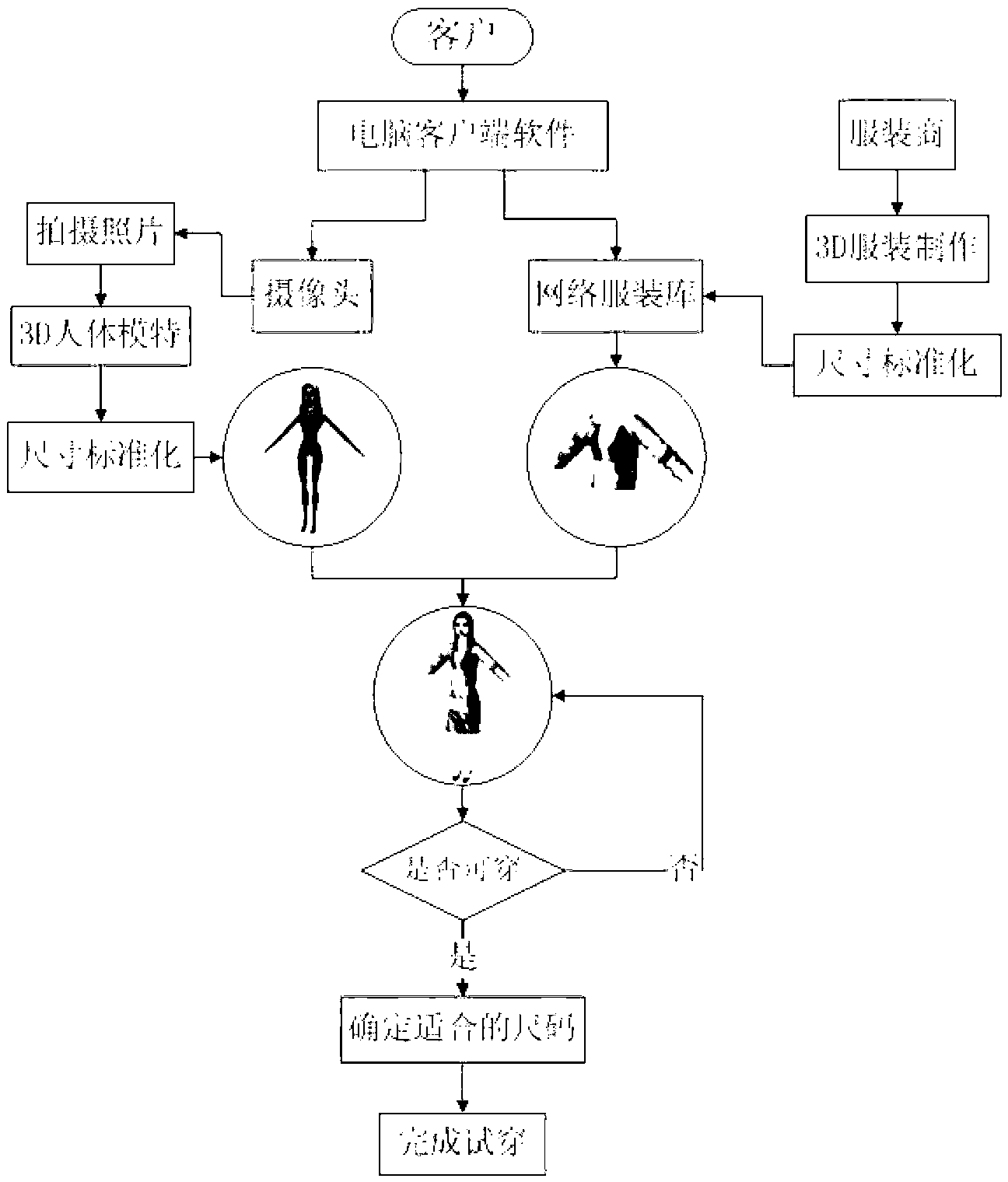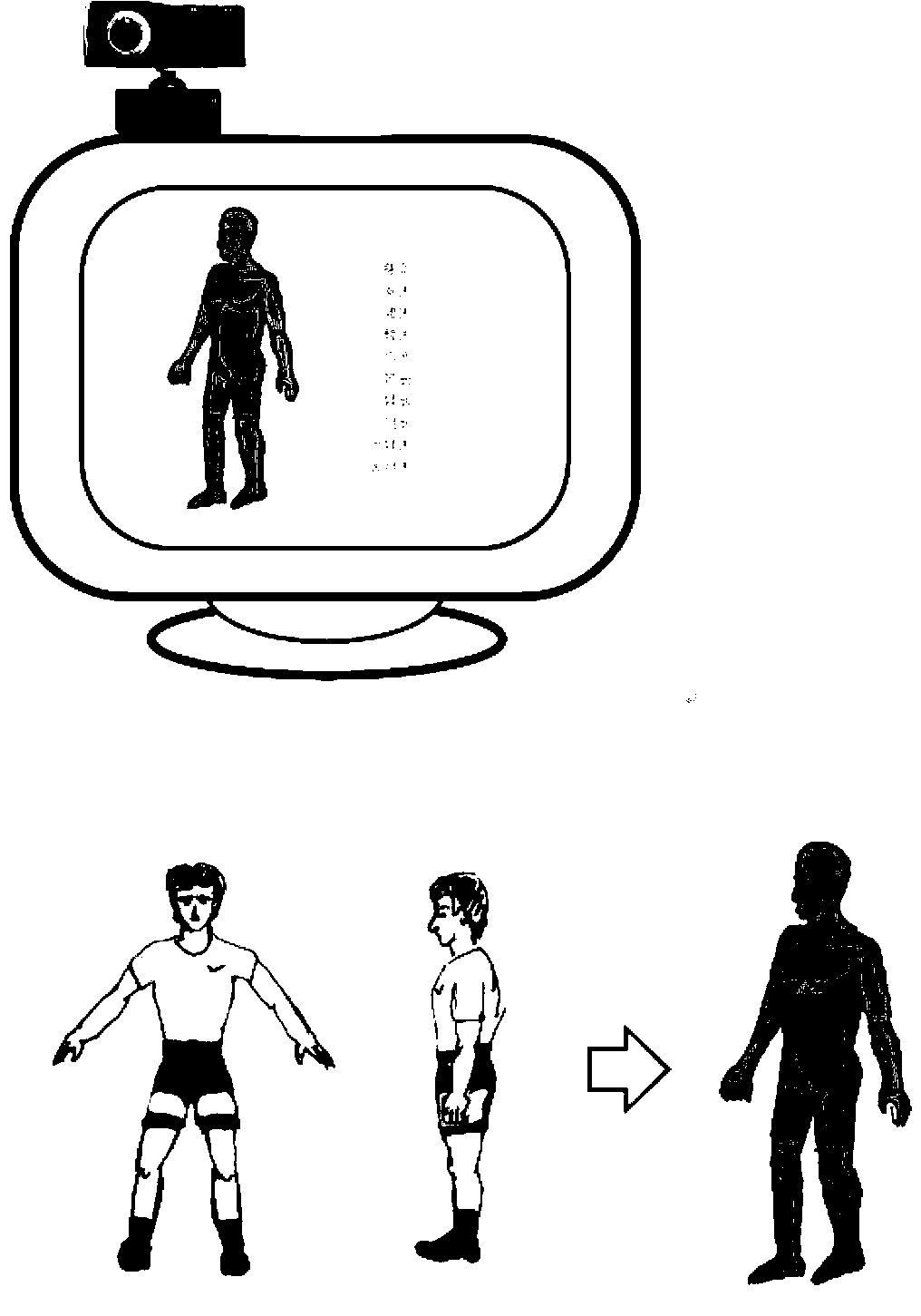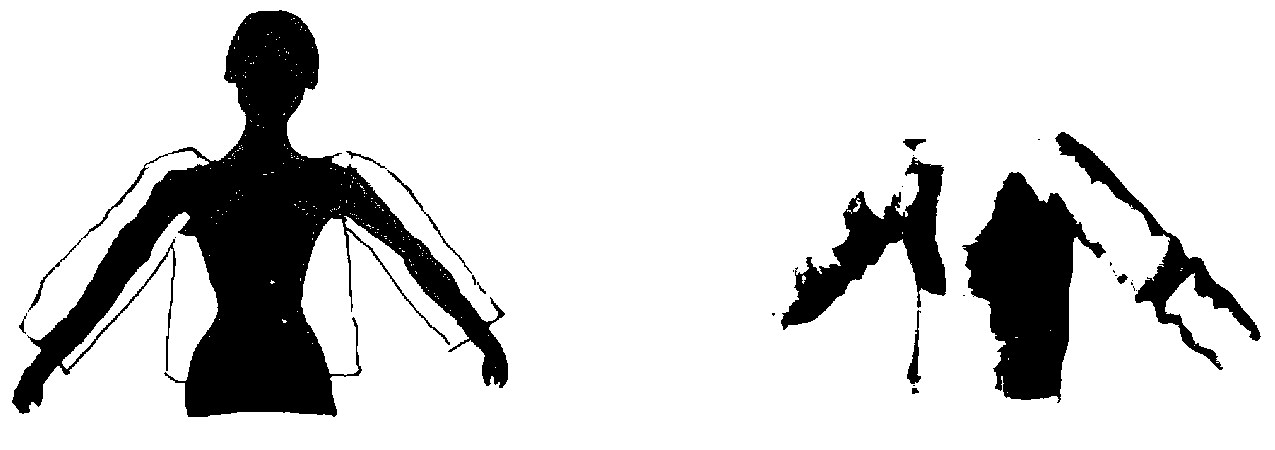However, for clothing products, due to the lack of features such as personal try-on and variety matching, the fitting effect is not ideal; in recent years, virtual fitting systems have gradually emerged, but the existing schemes or graphic effects do not have 3D effects, or cannot be customized according to customer needs. Trying on your own
body size, unable to judge whether it fits, or lacking a variety of clothing models with rich details, the try-on effect is not satisfactory
[0003] Among the relevant patents that have been applied in China, the patent "A Method for Advertisement of Apparel Through Network Virtual Fitting" (Application No.: 200610081514.X; Publication Date: 2007.11.28) allows customers to match various brands of clothing online , to achieve an advertising effect, but there is no 3D clothing, 3D character model, lack of real try-on effect, and customers cannot determine the size of clothing according to their own figure; the patent "Method, Device and
System for Three-dimensional Virtual Fitting" ( Application number: 201110255564.6; public date: 2011.12.28) Use 3D mannequins to try on clothes, but the 3D mannequins are based on
data retrieval, and there are some errors with real mannequins, and the clothes models are not 3D either. Lack of real details and other effects; the patent "Real Human Three-dimensional Virtual Fitting
System" (application number: 200710079556.4; publication date: 2008.09.03) uses 3D character models and clothing models for virtual fitting, but the clothing models established have no Consider real effects such as fabrics and folds; the patent "A Virtual Fitting Method Based on Computer
System" (Application No.: 201010534565.X; Publication Date: 2011.04.13) establishes a 3D
human body model by inputting
body size data from customers, and only partial Approaching the customer's body, it is impossible to accurately and completely establish the customer's
human body model, and the clothing model does not consider the actual and real effects of fabrics, folds, etc.; the patent "3D virtual fitting method for clothing for real people" (application number: 201010606869.2; public date: 2011.05. 04) The use of 3D human body models for fittings aims to provide a platform for customers to interact with the designs of clothing manufacturers. It is not an online fitting system for consumers and customers. The clothing models established also do not consider wrinkles. and other practical effects; the 3D virtual fitting method established by the patent "
Augmented Reality Real-time Virtual Fitting System and Method" (application number: 201110081203.4; publication date: 2011.08.17), the establishment of the human body model needs to rely on the depth camera, which is not suitable for ordinary users It is easy to use, the clothing is built according to the human body model, and the clothing size required by the customer cannot be determined; the patent "Network-based 3D Virtual Fitting Platform" (application number: 200720128949.5; publication date: 2008.09.03) provides a production It is a small-scale interactive platform between merchants and customers. Customers can enter a manufacturer's own clothing website for virtual try-on to achieve a kind of publicity and entertainment effects. It is not a service platform for a large number of
consumer customers. , the lack of accurate customer body models and detailed 3D clothing model libraries, of course, customers cannot determine the clothing size they need
[0004] Most of the related foreign technologies are currently oriented to clothing manufacturers, who customize related clothing according to the customer's own
body shape; among the patents on the virtual fitting and shopping system for consumer groups, the patent "Three-dimensional virtual
dressing method of clothes for real person” (Bibliographic data: CN102044038 (A)--2011-05-04) uses the modified 3D model of a real person to provide an
interactive design platform for designers and customers to design clothing that suits customers themselves, rather than Provide a convenient fitting system; the patent "Three-dimensional fitting emulation system" (Bibliographic data: CN101398942 (A)--2009-04-01) provides a simulated fitting system by converting 2D-3D clothing models, Clothing has no special effect, and the required clothing size cannot be determined; the patent "Real human body three-dimensional tridimensional virtual fitting system" (Bibliographic data: CN101256655 (A)--2008-09-03) proposes a fitting platform based on Designed to check the fitting effect, but not to determine the clothing according to the customer's own size; the web-based fitting platform proposed by the patent "Virtual dressing over
the internet" (Patent number: US6307568; Issue date: 23 Oct 2001) is only 2D drawing Matching, you can try to see the matching effect of various clothing, there is no 3D real effect, and there are no functions such as suitable size and try-on
In addition, among related technologies applied in the commercial field, H&M's virtual try-on website provides various clothing models produced by the company, and customers can choose mannequins close to their own for online matching. It is currently the world's leading commercial application. It is a virtual fitting system for consumers, but the sub-system lacks the customer's own human body model, and cannot achieve the fitting effect to determine the clothing size, and the human body and clothing models used are not 3D structures; the Fits.me website provides customers with A platform that can try on clothing online according to its own
body shape, determine the size of the clothing, and place an order online, which is relatively close to the service platform provided by the present invention, but the human body model it designs is based on a physical
robot for body feature
simulation, and uses This is to try on the size of the clothing. The clothing model is not a 3D model, and there are no actual effects such as wrinkles and fabric texture; the human face is also a unified plane model
 Login to View More
Login to View More  Login to View More
Login to View More 


